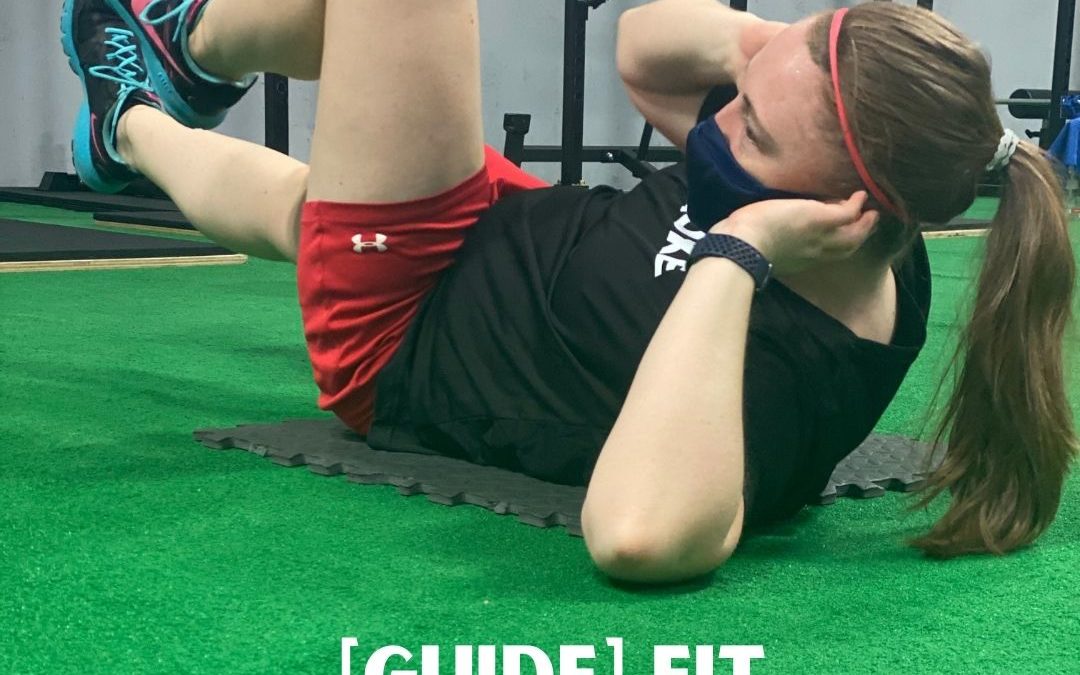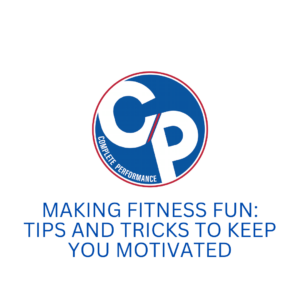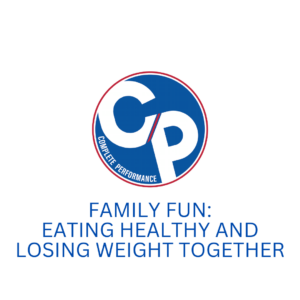Powerlifters are NOT endurance athletes.
EliteFTS suggests powerlifters should do 2 to 3 sessions of 20 to 45 minutes of cardio.
Hold up – AT A WALKING PACE.
I’m a powerlifter; therefore, as a coach, I naturally attract individuals looking to train through resistance and strength style methods.
Outside of my own personal preference, as a coach I strongly believe resistance training is the best method for those seeking fat loss results.
But, that doesn’t mean popular belief and social media influencers are flooding my clients with alternative methods…
Here are some questions I get A LOT:
“Should I be doing cardio after this?”
“How much cardio do I need for fat loss?”
“I need cardio to lose weight, right?”
Cardio Vs. Resistance Training for Fat Loss
For decades now the Cardio vs. Resistance Training for Fat Loss Debate has taken place.
I’m sure you’ve been a part of it to some degree – 1 friend LOVES her cardio, and she looks great, and another SWEARS by her weight training and looks good too.
So, really – what’s right?? Because let’s be honest, you want to just be told what works best and run with it.
BOTH (yes, this powerlifter did just say BOTH) have their merits.
BOTH have research demonstrating their contributions to weight loss, fat loss, calorie burn, and cardiovascular health.
However, all the research out there (both supporting and bashing either side) forgets 1 very critical factor.
IT MUST FIT YOUR LIFE.
In order to help you better determine which is right for you, let’s dive into the Pros & Cons of both cardio and resistance training.
Cardio Pros & Cons
Pros
High Intra-Workout Caloric Burn
That’s what you’re really here for, right?
Burn calories, lose weight?
Did you REALLY have a good workout if you didn’t burn HUNDREDS of calories during a workout?
The intra-workout caloric burn is a MAJOR perk to cardiovascular training. You burn A LOT of calories because your body is working HARD (hello, LOTS of huffing and puffing!).
Simple
Another perk of cardio is that everyone “knows” how to do cardio.
Or so they think…
You don’t need ANY equipment or training, and you can quite literally get out and just GO.
I mean just think about all the equipment you need for resistance training – barbells, dumbbells, bands, racks, and the list could go on and on.
In today’s busy society, the simplicity of cardio is VERY appealing and draws many individuals in because it can truly be fit to YOUR schedule.
Beneficial to Cardiovascular Health
Cardiovascular health is the #1 killer to Americans, so the fact that cardio training improves cardiovascular health draws MANY people in.
We’re slammed with our likelihood for heart attack, coronary artery disease, and stroke, so why wouldn’t you want to do something to reduce your risks of that??
Cons
Unsupportive to Muscle Mass Retention or Building
Working to build your muscular and cardiovascular endurance really means you’re improving the efficiency of your body.
Now, that’s very important for your cardiovascular health to decrease the strain on your heart, BUT it’s not great for retaining or building muscle.
Despite all the perks of having muscle, it is WILDLY inefficient.
Maintaining muscle alone requires a significant number of calories to support twitches, keep it oxygenated, and supply it with nutrients.
That’s maintenance alone – building is a completely different animal, but we’ll save that explanation for another day.
The point is that when you primarily follow a cardiovascular training program your body works harder and harder to become more efficient. At some point, the heart, lungs, and body systems are efficient enough that it begins to look to further improve efficiency by removing inefficient parts (AKA muscle).
Therefore, if you’re looking to retain or build muscle mass, cardio is NOT the answer for you.
Minimal Post-Workout Caloric Burn
One of the biggest pros of cardio training is the intra-workout caloric burn; however, one of the biggest cons is the fact that the post-workout burn, quickly ends.
When asked, I tell individuals that pretty much as soon as you’ve returned to a normal breathing and heart rate, your caloric burn is over.
Yes, before you start sending the hate mail, there is some caloric burn that takes place following a cardio training session, but due to its repetitive nature, the muscles don’t really take that much of a beating, thus requiring minimal repair.
Easily Adapted To
There aren’t too many ways to run.
Or bike.
Actually, elliptical, stair step, or whatever other form of cardio you’ve tried.
For that reason, it’s REALLY easy for your body to adapt to its movement patterns.
The worst part about that is that adaptation means your body has become more efficient, meaning you no longer are burning as many calories as possible or stressing the system to elicit big changes in your body.
Resistance Training Pros & Cons
Pros
Supports Muscle Building
Resistance training quite literally breaks apart muscle fibers to rebuild them making them stronger or larger.
It is THE WAY to build bigger, stronger muscles.
Because there’s greater variety in resistance training as compared to cardio, you’re constantly putting your muscles in a state of stress to continuously elicit a response to strength, build, and maintain muscles.
Greater Post-Workout Caloric Burn
If you looked at your smart watch after a 45-minute resistance training session then compared it to a 45-minute cardio session, you’d be pissed.
The problem is you shut your watch off after your workout and don’t quite get a tracking of the calories burned and resistance training burns A LOT of calories following a training session.
Think back to the last point – resistance training breaks apart muscle fibers.
^^That takes a lot of energy and resources (AKA calories burned) to support that repair process.
Greater Variety
This is enough to lock me into a resistance training program…
There are HUNDREDS of exercises out there.
There are HUNDREDS of variations to each exercise.
Then there’s the different training programs, intensity modifications, and manipulations to frequency to be made to constantly vary training.
Do you really want to do the same movement for an entire session? Day after day? Week after week?
Cons
Learning Curve
One of the biggest things deterring people from resistance training is the fact that it takes TIME to learn HOW to follow a training program.
It truly does require an investment of time and sometimes money to learn proper technique, variations, and progressions that fit YOU.
Lower Intra-Workout Caloric Burn
Despite all the research out there supporting the high post-workout caloric burn, it’s VERY hard for people to work past the fact that there are less calories burned during training.
Because that’s such a difficult thing for people to see past, it really deters people from resistance training programs.
Risk of Injury
Yikes, another major deterrent from resistance training.
The objects used for resistance training are intimidating, and unless you’re a super klutz, there’s a greater risk for injury moving a weight than there is going for a jog.
For that reason, it really deters people from training, as nobody’s looking for an injury that hampers them for the rest of their day.
Shameless plug for hiring a coach, but it’s an excellent way to learn how to use the equipment properly and significantly decrease your risk for injury.
What Is Enough Cardio?
IT DEPENDS!
Typically, cardio is overdone, and people could benefit from doing a lot LESS.
The exact amount is VERY unique to the individual.
Generally, I recommend my individual or FIT Program clients add 1 to 3 sessions of light intensity cardio throughout the week. These sessions might last 30 to 45 minutes but are done at an intensity wherein they can maintain a conversation. Calories are burned during this time, but the primary objective is to stimulate recovery and boost the metabolism.
There are other individuals who prefer cardio as their primary means of exercise, and again I’d suggest these individuals do LESS than what they believe they need.
It’s hard for me to say exactly how often, how long, or how intensely you should exercise if that’s you, but here are some general suggestions:
- Train 3 to 5 times per week with a MINIMUM of 2 full rest days.
- Vary your intensity through the use of intervals.
- Change your path often (you’d be amazed at how much of a benefit this can offer!).
- Study your form to prevent injuries.
- Compliment your cardio training with resistance training (even a short program).
Look, I’m no cardio expert, but if you’re interested in incorporating more cardio training into your life, let’s set up a time to chat about your first steps by clicking HERE.
Does FIT Require Cardio?
IT DEPENDS!
It truly depends on a number of things:
- Your goals
- Your day-to-day activity levels
- Your stress levels
- Your availability
- Your preferences
A number of FIT clients are recommended to add cardio in the form of walks, bike rides, or light running sessions.
However, a number of FIT clients are recommended to pass on cardio because it doesn’t fit their schedule right now, their stress levels are ridiculously high, or they’re just not interested in doing cardio.
“But how will I burn enough calories to burn fat??”
You will, I promise.
Resistance training is EXCELLENT for burning calories but remember, it’s not necessarily the one’s you’ll see on your watch while you record a workout.
Not to mention, every FIT workout contains a pre-programmed Metabolic Finisher to leave you with a MEGA calorie burn that leaves you sweating 😉
If you want to give a workout from our FIT Program a try, let’s set you up with your first workout HERE.
About The Author
Jordan Davies is the Co-Owner of Complete Performance. Jordan has her B.S. in Exercise Science and Psychology, and her M.A. in Holistic Health Studies. She is a CSCS certified strength and conditioning coach, and a PN-1 and NCI-1 certified nutrition coach. She loves to study how the human body needs to be moved and nourished and making that fit to your unique lifestyle. Click Here Now to Apply for Coaching with Jordan.




